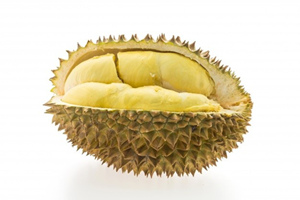Why Japanese Eel Is So Expensive
Narrator: This is the most expensive fish in Japan. In January 2018, a kilogram of these baby eels cost around $35,000. That’s more than bluefin tuna, and almost as much as the price of gold at the time. But catching these eels is just the beginning. It can take a year of work until they’re large enough to be sold. So what makes these eels so popular? And why are they so expensive?
People in Japan have eaten eel for thousands of years. Restaurants like this can sell 40 to 50 tons of eel each year. Japanese eel, or Anguilla japonica, can be found across East Asia, but overfishing and changing habitats have caused a huge decline in eel populations. Since 1980, the global catch of eel has declined by more than 75%, which has had a huge effect on price.
Rui Kinoshita: What is happening these days is the difference in the price – is so much each year. It can be tripled compared to last year. Next year can be a third of the year before.
Narrator: Unlike other types of fishing, the majority of eels are raised, not caught as adults. Young eels, called glass eels, are caught in the wild and raised on farms like this. No farms have been able to efficiently breed the eels in captivity. So farmers depend on the catch of young eels to make a profit.
Michio Tanaka: The amount I raise here varies each year, but roughly speaking, it’s about 30 tons – about 150,000 or 160,000 eels.
Narrator: Raising this many eels requires constant attention. Michio has been working as an eel farmer for almost 40 years.
Michio Tanaka: As for farming eels, I don’t think eels are easy fish to grow. If one disease spreads or one accident happens in the pond, you can never make a profit. This can be done only through daily care.
Narrator: After the cost of the eels themselves, feeding them is the most expensive part. Two to three times a day, workers feed eels this. It’s a mixture of fish meal, wheat, soybean meal, and fish oil.
Michio Tanaka: I am trying to feed them in a way that food gets around to all 150,000 baby eels. That is a difficult task. I pay a lot of attention to those baby eels. If something happens to that one pond, everything is gone.
Narrator: After six to 12 months of work, eels are big enough to be sold. Workers unload the eels and sort them by size to determine where they’ll be sold. Experienced workers can quickly tell the difference just by feel. Some of these eels will end up at restaurants like Surugaya, which has been serving eel for over 150 years. That high demand is part of the reason young eels are so expensive.
The final dish is called kabayaki. It may look simple, but preparing it takes years to master.
Chef: There is a saying about cooking eel. It takes three years to master the skewering. Slicing takes eight years. Grilling needs a whole life to master.
Narrator: Workers prepare eel alive to maintain freshness, but this makes handling much more difficult. Workers remove the bones and cut eels to the proper size for the skewers.
Chef: Finally, grilling. It takes a whole life to master, until you die.
Narrator: Eel has to be constantly monitored while it’s cooking to achieve even grilling.
Chef: The best eels for us have good texture. Not too hard, not too soft.
Narrator: Chefs steam, then grill each eel three times, dipping it into sauce between each grilling.
Chef: Presentation and taste have to be equally good. When you open the lid, it has to look beautiful.
Narrator: Kabayaki presented in a lacquer box with rice is called unajū. It can cost up to $91 depending on the price of adult eel. If prices are too high, restaurants struggle to make a profit.
Chef: The amount of eel catch is a matter of life and death for eel restaurants. We are all very concerned about it. I myself am concerned, too.
Narrator: In Japan, eels are eaten year-round, but consumption peaks in the summer, and it’s become a big part of some local economies. But the high demand has caused concern. In 2014, Japanese eels were classified as endangered.
Kouji Yamamoto: When they can’t catch enough young eels, the price goes up. When the price is so high, what can those farmers do? Finding the right balance is currently the biggest problem.
Narrator: There have been efforts to improve the eel population, like regulating fishing, releasing adult eels back into the water, and researching how to hatch eels in farms. But the future of Japanese eels remains unclear, and the price is likely to increase with demand.















